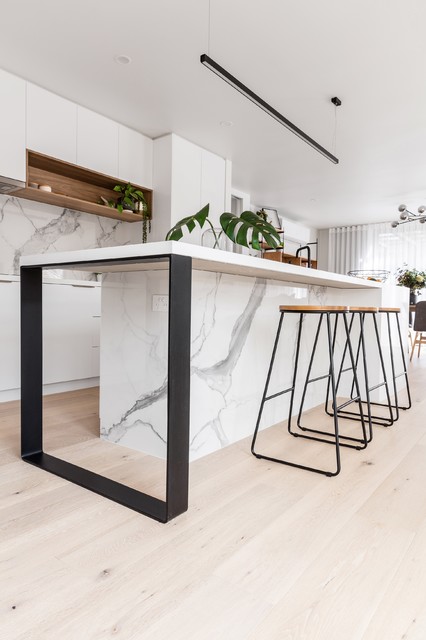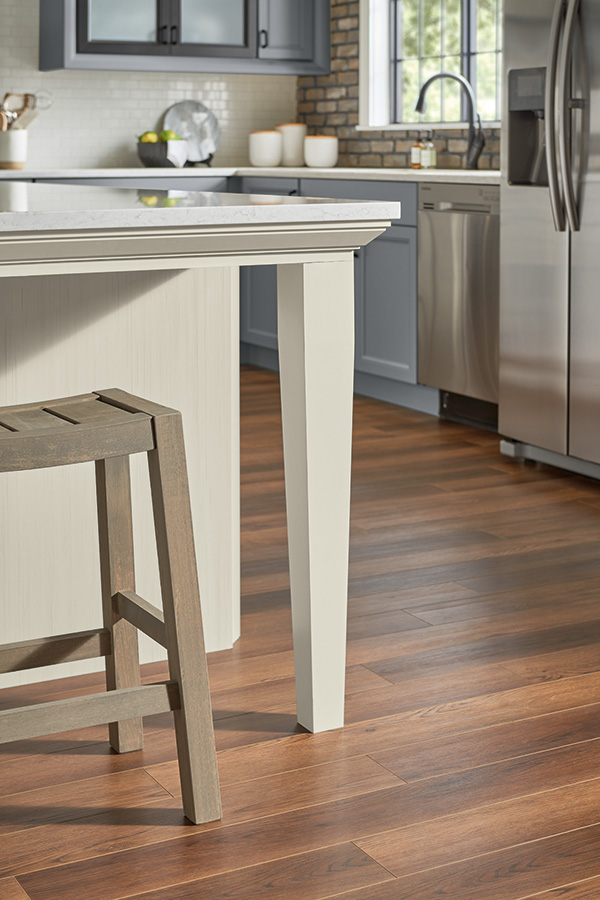Update Your Kitchen with Classy Kitchen Island Leg Solutions
Wiki Article
Exactly How to Pick the Perfect Cooking Area Island Leg to Enhance Your Kitchen Area Layout
Selecting the ideal cooking area island leg is a nuanced procedure that requires careful factor to consider of various aspects such as style design, material, and functionality. A well-chosen leg can not only sustain the framework but also serve as a defining component that boosts the overall aesthetic of your cooking area.Evaluate Your Kitchen Style
When it pertains to selecting a kitchen island leg, it's necessary to examine your kitchen area design to guarantee a cohesive style. The cooking area is often the heart of the home, and the island functions as a useful and visual centerpiece. The choice of leg design need to show the general style of your kitchen, whether it be modern-day, standard, farmhouse, or commercial.As an example, in a contemporary cooking area, sleek, straight legs in a minimal style may improve the streamlined appearance. Conversely, a rustic cooking area could gain from hefty, turned legs that convey warmth and character. If your cooking area features a classic decoration, consider delicately developed legs that echo standard craftsmanship.
Pay interest to the proportions of both the island and the surrounding area; the leg's range should match the total measurements. By aligning your leg choice with your kitchen's style, you create an unified and welcoming environment that reflects your individual aesthetic.
Consider Product Options
Choosing the appropriate product for your cooking area island leg is critical, as it influences both longevity and aesthetic allure. Various materials supply distinctive benefits and can considerably influence the general style of your kitchen.Wood is a popular option, understood for its heat and adaptability. It can be tarnished or repainted to match your kitchen area's color system, giving an ageless look. Nevertheless, it may call for more maintenance to stop damages from moisture and heat.
Metal legs, such as stainless-steel or functioned iron, evoke a industrial and modern-day feeling. They are exceptionally resilient and resistant to damages, making them excellent for high-traffic locations. Steel can likewise be finished in various means, permitting customization in terms of structure and shade.
Another alternative is composite materials, which integrate aesthetic appeals with usefulness. These can resemble the look of wood or metal while commonly being lighter and much easier to preserve.
Finally, consider rock legs, which can bring a lavish touch but might require extra architectural assistance. Each material has its one-of-a-kind characteristics, so it's vital to select one that straightens with your kitchen area's total layout vision while making sure durability and performance.
Explore Design Attributes
Various layout features can boost the functionality and aesthetic appeal of a cooking area island leg, making it an integral component of the total kitchen area layout. One key facet to think about is the style of the leg, which can range from typical transformed designs to sleek, modern lines. The selection of design need to match the existing cabinets and components, developing a cohesive appearance.Along with design, the coating of the leg can dramatically affect the kitchen area's visual charm. Options such as painted, discolored, or natural finishes can either highlight the leg as a statement item or permit it to mix perfectly right into the cooking area atmosphere. Decorative elements, such as makings or embellishments, can also add personality and uniqueness, changing an easy leg right into a focal point.
Furthermore, including functional features like open shelving or integrated storage space can enhance energy while keeping aesthetic worth. The interplay of these design includes not just boosts the kitchen area island leg's look yet also adds to the general performance of the cooking area room. By attentively picking these elements, house owners can ensure their cooking area island leg serves both practical and attractive purposes.
Determine Size and Height

Normally, the standard elevation for cooking area island legs is around 30 inches, which aligns with the elevation of common counter tops and dining surface areas. Nevertheless, if your island offers a double objective, such as a morning meal bar, you may take into consideration a higher leg measuring 36 inches. This elevation advertises an extra laid-back dining experience and accommodates bar stools conveniently
In regards to width, the leg ought to not only offer adequate support yet likewise maintain aesthetic balance. A size of 3 to 5 inches is generally suitable, allowing for enough stability without overpowering the overall design. Additionally, consider the spacing between the legs; they ought to be positioned to enable simple movement and ease of access around the island.
Ultimately, taking accurate measurements and considering the planned use the cooking area island will certainly direct you in selecting the proper dimension and elevation of the legs, making certain both visual charm and useful functionality in your kitchen design. kitchen island leg.
Budgeting for Your Selection

Following, identify the style that aligns with your kitchen's visual. Custom-designed legs may come with a costs, while pre-fabricated alternatives normally supply expense savings. It's vital to balance your wanted visual with the functionalities of your budget.
Consider extra prices that might emerge, such as installment or finishing. Consist of these expenses in your budget. if you're planning to employ an expert for setup.
Last but not least, allot a backup fund for unexpected prices that might you could try here arise throughout the restoration. By thoroughly assessing these elements, you can make enlightened decisions that not only enhance your kitchen's layout but additionally maintain your remodelling within financial reach. A well-planned budget will make certain that you attain the desired look without jeopardizing your monetary objectives.
Final Thought
To conclude, picking the perfect kitchen area island leg necessitates mindful consideration of various variables, consisting of the general kitchen area design, product options, layout functions, and suitable measurements. By straightening these components with the wanted visual and capability, a visually enticing and unified kitchen area island can be achieved. Furthermore, budgeting for the selected products and installment will certainly guarantee that the option procedure continues to be practical and practical, inevitably improving the cooking area's style and functionality.When it comes to top article selecting a kitchen area island leg, it's important to examine your kitchen area style to make sure a cohesive style.Many layout attributes can enhance the functionality and aesthetic allure of a kitchen island leg, making it an important component of the general kitchen layout. The interplay of these style includes not just raises the kitchen area island leg's look however additionally contributes to the general functionality of the kitchen area area.Developing a budget plan for your kitchen island leg is a vital step that can dramatically affect your overall kitchen improvement costs.In conclusion, choosing the suitable cooking area island leg necessitates mindful consideration of different factors, including the general cooking area design, material choices, style attributes, and ideal dimensions.
Report this wiki page